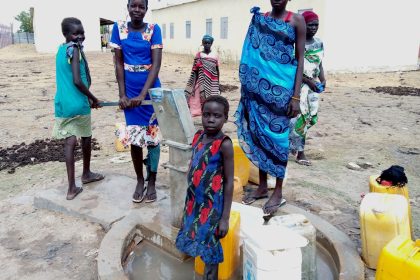El Niño to have a devastating impact on southern Africa harvests – FAO
ROME, FEBRUARY 12 – Southern Africa is currently in the grip of an intense drought that has expanded and strengthened since the earliest stages of the 2015-2016 agricultural season, driven by one of the strongest El Niño events of the last 50 years.
Across large swathes of Zimbabwe, Malawi, Zambia, South Africa, Mozambique, Botswana, and Madagascar, the current rainfall season has so far been the driest in the last 35 years. Agricultural areas in northern Namibia and southern Angola have also experienced high levels of water deficit.
Much of the southern African sub-region has consequently experienced significant delays in planting and very poor conditions for early crop development and pasture re-growth. In many areas, planting has not been possible due to 30 to 50 day delays in the onset of seasonal rains resulting in widespread crop failure.
Although there has been some relief since mid-January in certain areas, the window of opportunity for the successful planting of crops under rain-fed conditions is nearly closed.
Seasonal forecasts from a variety of sources are unanimous in predicting a continuation of below-average rainfall and above-average temperatures across most of the region for the remainder of the growing season.
The combination of a poor 2014-2015 season, an extremely dry early season (October to December) and forecasts for continuing hot and drier-than-average conditions through mid-2016 suggest a scenario of extensive, regional-scale crop failure.
South Africa has issued a preliminary forecast of maize production for the coming harvest of 7.4 million tonnes, a drop of 25 percent from the already poor production levels of last season and 36 percent below the previous five-year average.
These conditions follow a 2014-2015 agricultural season that was similarly characterized by hot, dry conditions and a 23 percent drop in regional cereal production. This drop has increased the region’s vulnerability due to the depletion of regional cereal stocks and higher-than-average food prices, and has substantially increased food insecurity.
The numbers of the food insecure population are now increasing due to the current drought and high market prices. It is expected that the population in need of emergency food assistance and livelihood recovery support will increase significantly.

 Boeing’s record SAF purchase supports airlines decarbonisation efforts
Boeing’s record SAF purchase supports airlines decarbonisation efforts
 Uganda Airlines likely to miss Spirit A320neo delivery slots
Uganda Airlines likely to miss Spirit A320neo delivery slots
 Rolls-Royce Pearl 10X engine takes flight
Rolls-Royce Pearl 10X engine takes flight
 Unpacking results-based financing: balancing strengths with weaknesses
Unpacking results-based financing: balancing strengths with weaknesses
 Big fish in small pond Stanbic notches up $100m profit for 2023 topping previous figure by 15%
Big fish in small pond Stanbic notches up $100m profit for 2023 topping previous figure by 15%
 Uganda, Nigeria explore deeper economic cooperation
Uganda, Nigeria explore deeper economic cooperation
